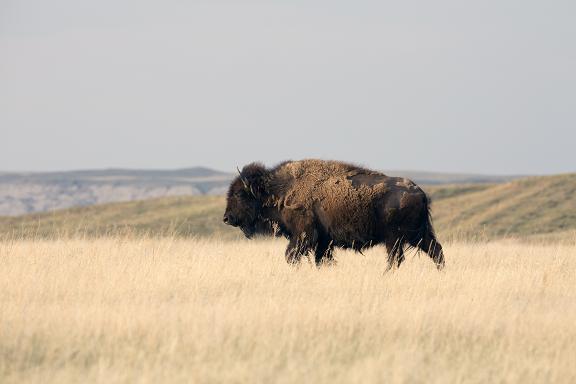
The Great Northern Grasslands comprises more than 180 million acres of rich agricultural land smack in the middle of the U.S. and Northern Canada. More than 70 percent of the hilly grasslands that stretch across the states of Montana, North Dakota, South Dakota and Wyoming make up America's breadbasket that not only feed farmers and consumers, but the Midwest's rich and diverse ecology of buffalo, birds, ferrets and many other species.
But it wasn't always that way.
Some 70 years ago, dust storms rolled through the entire Midwest, stripping the land of its top soils, turning fields to desert and homes to devastation. Animals died in large numbers; wildlife starved. Entire communities, suddenly destitute, migrated west in search of a new place to live. The lands that had made up North America's valuable grasslands had been stripped barren, and while it was climate that levied the devastation, it was the farming and land-management techniques that were ultimately blamed for the losses.
These days, the Great Plains live in a precarious balance. More than 97 percent of America's native grasslands have disappeared or are in jeopardy of being lost, according to the National Wildlife Federation. Species that depend on that vegetation are also in threatened by the loss of terrain, much of which has been assumed for agricultural production.
But two companies think they have come up with at least a partial answer. It's a concept that harkens back to the early days of North America, when the Great Plains thrived from a vibrant, self-sustaining ecology with one key ingredient: buffalo.
Wild Idea Buffalo and Patagonia Provisions have joined together to repopulate free-roaming buffalo herds on two ranches comprising 60,000 acres in South Dakota.
"Grazing naturally and roaming freely, the buffalo help nurture the prairie back to health by recycling nutrients and tilling the soil as they roam," says Patagonia, which notes the buffalo are slaughtered humanely in the prairie, "avoiding the need for crowded, stressful slaughterhouses."
Recent reports of buffalo slaughtered in holding pens tethered through the snout has garnered a fair amount of concern about the buffalo industry recently. Wild Idea maintains that the meat it produces is antibiotic free and humanely harvested.
Of course, the new endeavor doesn't solve all of the problems that are plaguing the Great Northern Plains these days. It doesn't answer how to ensure that those species of songbirds and the black-footed ferrets that live on the brink of existence will be protected if other areas of the grasslands disappear, either due to climate change or continuing development.
And truth be told, they aren't the only ranches that have committed themselves to raising free-range bison and who maintain that the process is a lot more beneficial for the environment (and the consumer). And when it comes to the longevity of places like the Northern Great Grasslands and Canada's prairies, I guess that proliferation of thought is a good thing.
The return and nurturing of buffalo herds on the Northern Great Plains is, however tenuous its ecology remains, a positive development. Hopefully Wild Idea Buffalo and Patagonia's endeavor, and those who support such endeavors, will sow a new education about the importance of protecting not just the topsoil of this rich land, but the many species that actually ensure its sustainable existence.
Image credit: Jon Levitt/Patagonia
Jan Lee is a former news editor and award-winning editorial writer whose non-fiction and fiction have been published in the U.S., Canada, Mexico, the U.K. and Australia. Her articles and posts can be found on TriplePundit, JustMeans, and her blog, The Multicultural Jew, as well as other publications. She currently splits her residence between the city of Vancouver, British Columbia and the rural farmlands of Idaho.














